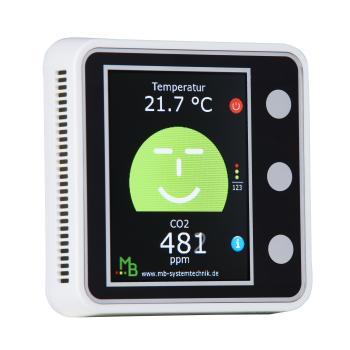How the Birdie Design Indoor CO₂ Monitor (Home & Office) Is Transforming Remote Work Environments

In the era of remote work, the workspace is no longer just the office—it’s increasingly our homes, shared spaces, and hybrid setups. Yet while we pay attention to ergonomics, lighting, and network speed, one vital parameter often goes overlooked: indoor air quality, specifically carbon-dioxide (CO₂) concentration.
Why CO₂ matters for productivity
Over time, in an enclosed space with limited ventilation, CO₂ from exhaled breath can accumulate. Elevated CO₂ levels are linked to reduced cognitive function, lack of focus, fatigue and even headaches. The presence of high CO₂ often signals low fresh-air exchange, which means less oxygen, more “stale” air and a workspace that subtly disrupts productivity.
What this monitor does
The Birdie Design Indoor CO₂ Monitor (Home & Office) uses real-time sensing of CO₂ levels and gives you a clear visual cue (and sometimes other signals) when ventilation is needed. It acts like a traffic-light for your air: you’re alerted when the air quality is dropping, so you can act (open a window, start mechanical ventilation, etc).
Because the technology is based on NDIR sensors (non-dispersive infrared) or similar, it offers accurate readings of CO₂ concentration.
How it transforms remote work
- Improved focus & energy: When working from home, distractions are constant. Poor air quality adds another invisible drag. Using a CO₂ monitor means you’re alerted to stale air before you start feeling sluggish.
- Data-driven breaks: Rather than setting arbitrary break times, you can set your ventilation or break schedule based on actual air-quality metrics.
- Health & wellness benefit: Beyond productivity, fresh air supports overall wellbeing—especially helpful when you spend many consecutive hours in the same space.
- Hybrid readiness: A home office that matches the air-quality awareness of a modern corporate office sets you up well for hybrid work.
- Energy-efficient ventilation: The monitor allows you to ventilate when needed, not just on a fixed timer—so you don’t over-ventilate (and waste energy) when it’s not required. For example, many CO₂ “ampel”-type devices use thresholds like <1000 ppm = green, 1000-2000 = yellow, >2000 = red.
Setup & best practices for remote workspaces
- Place the monitor at your typical working height and away from direct window/door drafts to get an accurate reading of the “working air” zone.
- Set alert thresholds based on your usage—for example, when you feel concentration slipping, check the reading.
- Use the alerts to trigger a ventilation action: open a window, turn on a fan or air-exchange system.
- Document or take note over time: you might notice certain times of day where CO₂ builds (after a long meeting, or when many devices running).
- Combine with other environment checks: temperature, humidity, lighting—they all affect comfort and focus.
Final word
If your home office is your productivity hub, treating it like a professional environment is smart. The Birdie Design CO₂ Monitor (and devices like it) bring industrial-class air-quality awareness into the home. With a simple visual prompt, you’ll be reminded to breathe better, focus better—and feel better while working.
Read More: https://tecsysproductguides.blogspot.com/2025/10/how-birdie-design-indoor-co-monitor.html
- Art
- Causes
- Crafts
- Dance
- Drinks
- Film
- Fitness
- Food
- Oyunlar
- Gardening
- Health
- Home
- Literature
- Music
- Networking
- Other
- Party
- Religion
- Shopping
- Sports
- Theater
- Wellness




